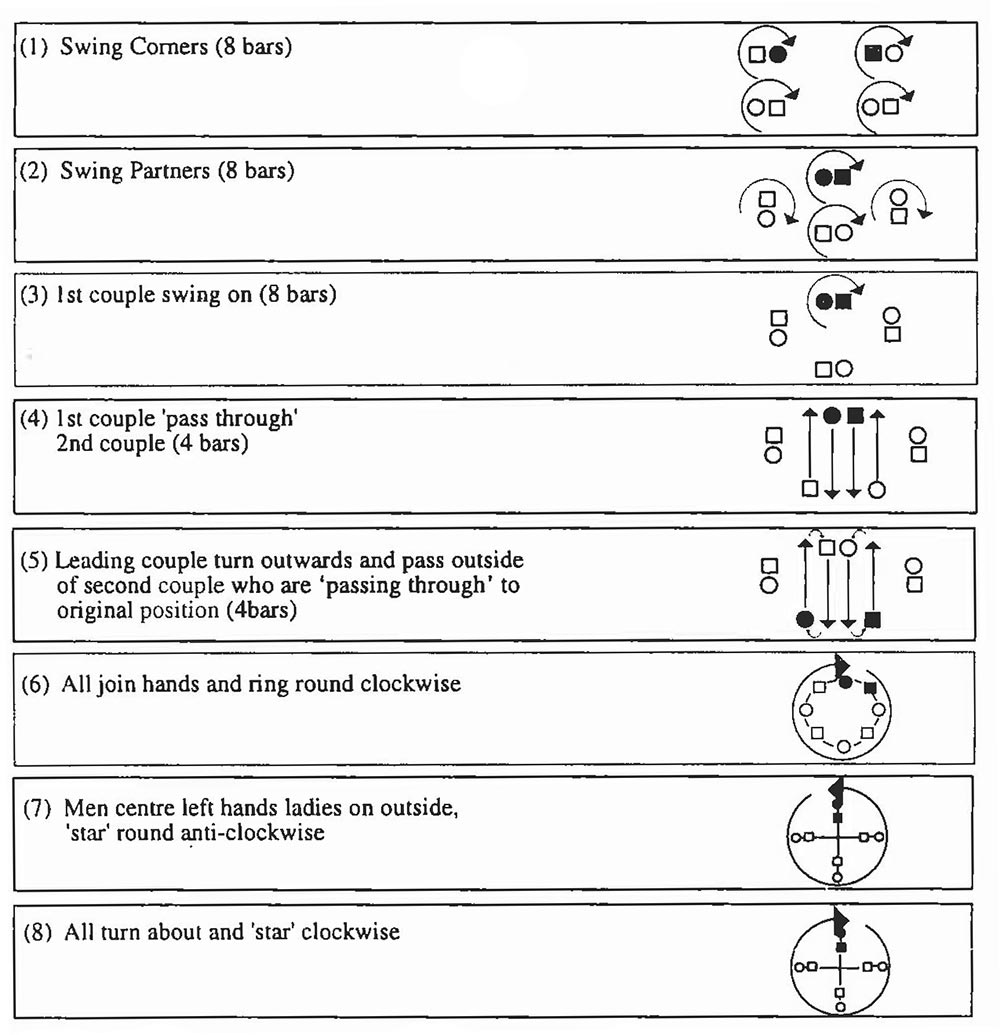Ulster-Scots Country Dances
1. THE LA RUSSE (FIRST FIGURE)
In Ullans 3 a history of the Ulster-Scots square-dancing tradition was given. In this and future issues of Ullans, we hope to publish individual ‘figures’ of some of these square dances. We do this in the hope that the way in which they are still danced (in places like Raffery, Greyabbey, Ardmillan and Killinchy in County Down), can be recorded for future generations. We are grateful to Mrs Jeannie Peak and Mr Jackie Donnan for providing us with a description of both the dance movements and the appropriate fiddle music.
La Russe (first figure) — Music: “What wud ye dae if yer rump wus brok”

The La Russe square dance begins, as do all these traditional square dances, in the ‘quadrille’ formation, as shown below. This means four couples facing each other in a small tight square (about two steps out from a centre point). The leading or first couple are always those with their back to the music at the ‘top’ of the room. To their left is the 4th couple, opposite the 2nd couple and to their right the 3rd couple. Each couple stands with gent to the left and lady on the right. Again as with all square dances, during the introductory bars of music partners turn to each other, bow (called ‘honouring’), turn to the person on their other side, and bow to or honour their ‘corners’. This formation of eight dancers in a square is called a ‘set’, and there may be as many sets as space and numbers permit.
Each traditional square dance is arranged into a number of different dances called ‘figures’. In many, such as the quadrilles, lancers and Caledonians etc, there are five or six figures and it is customary to honour partners and corners at the beginning of each figure. However, other oul figger dances (as these old country dances were often called) consisted of one figure only, for example, ‘Trip to the Cottage’, ‘Soldiers Joy’, ‘Bessie Black’, etc.
The La Russe is unusual in that it is a relatively short dance and contains only two figures, the first of which is set out in this issue.
Unless otherwise stated, all movements in these dances are progressed by means of a simple walking step in time to the music (except of course for ‘swinging’ and where a ‘polka’ step is identified). At all times men step off with the left foot and ladies with the right.
Jeannie Peak
LA RUSSE
1st Figure

The following 8 movements are repeated 4 times until each couple in turn has taken the ‘lead’ (as for 1st couple below).

Break and swing corners to repeat another 3 times until all couples have ‘swung on’ as in (3).
Next: The Minister's Speech
Previous: Editorial
Contents: Ullans: The Magazine for Ulster-Scots, Nummer 4 Spring 1996

